
March 19, 2009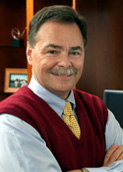 Fred Sanfilippo, MD, PhD |
Making the most of what we have Emory's Woodruff Health Sciences Center has a long history of doing the right thing—applying a wealth of resources to our missions of research, education, and patient care. We've been gifted with truly outstanding human, fiscal, spatial, and programmatic resources, and we're applying them in our best effort to reach our goal of being the 21st century model for an academic health sciences and health services center. But the hard truth is that we find ourselves in a very different place than we were a few short months ago, and as the world has changed, so must our definition of what it means to do the right thing. Clearly, that doesn't mean revising our lifesaving and life-affirming vision and goals. What it means instead is honing our focus on those activities that are mission-critical and strategically applying our finite resources to most effectively and efficiently achieve them. Simply put, it means making the most of what we have—especially when that requires tough decisions. Relatively many of the cost-reducing measures we've undertaken so far have been obvious and reasonably painless—for example, minimizing travel, cancelling memberships and subscriptions, reducing print copies of publications in favor of electronic ones, etc. However, some of the decisions we've had to make have been neither easy nor entered into lightly. We've curtailed some valued and time-honored WHSC traditions, such as employee holiday celebrations and our annual physician appreciation event. This doesn't mean that we value our faculty and staff less in these challenging times. Our people always have been and will be our most precious resource; we simply now need to express our appreciation in ways that are less costly but equally heartfelt. In fact, we had a tremendous response from our physicians when planning began for the physician appreciation event. They overwhelmingly recommended foregoing this annual celebration in the interest of good stewardship; is it any wonder we appreciate them so much? Likewise, we've had to cancel our Mini Medical School, a popular and enlightening event that has engaged the community in health and education in years past. Again, this doesn't mean we care less about helping build a healthy community—rather the current environment requires that we find new, more cost-effective ways to engage our neighbors. Finally, our policy of deferring new hires whenever possible results in being asked to do more with less. Everyone understands the challenge this represents and the extraordinary efforts being put forward by people organization-wide to make it possible. As always, we are all grateful for everyone's continued commitment to transforming health and healing … together. Please share your thoughts and feedback at evphafeedback@emory.edu. |
||||
Making the most of what we have Spearman holds new dual leadership role in pediatric research Reducing chances for human error WHSC expands media partnerships
|
|||||
|
Spearman holds new dual leadership role in pediatric research In a new dual leadership role, Paul Spearman has been appointed chief research officer for Children's Healthcare of Atlanta and as vice chair of research in the medical school's Department of Pediatrics. Spearman, who was selected following a nationwide search of candidates, has been director of pediatric infectious diseases, epidemiology, and immunology at Emory since November 2005, when he came here from Vanderbilt. "Spearman's appointment solidifies the long-standing relationship and commitment of Emory and Children's to expand our research partnership to impact the health of children in Atlanta and throughout the world," says EVPHA Fred Sanfilippo. This appointment derives from implementation of a plan approved by Children's Board of Trustees in late 2007 to position Children's as a top-tier pediatric research enterprise, working in partnership with Emory and other institutions, including the CDC, Georgia Tech, and Morehouse School of Medicine. Part of that plan was the recruitment of a research leader who would serve at both Children's and Emory. Spearman has an extensive research background in infectious diseases, with a special interest in HIV vaccine development. At Vanderbilt, he was principal investigator of the HIV Vaccine Trials Unit. He has served on numerous scientific committees and currently is a member of the NIH AIDS Molecular and Cellular Biology Study Section. He was chair of the NIH Special Emphasis Panel for HIV Vaccine Design and Development in 2004 and a member of the NCI Council of Scientific Advisers from 2006 to 2009. He currently supervises four NIH-funded research projects in his laboratory. Spearman's appointment coincides with the opening of the new Children's Pediatric Research Center, located on the Children's at Egleston campus. The center is a new clinical interaction research site of the Atlanta Clinical & Translational Science Institute. It includes a four-bed inpatient research unit, a four-bed outpatient research unit, a core research lab, and research pharmacy services. Emory pediatric oncologist Howard Katzenstein is the center's medical director. |
||||
|
Reducing chances for human error If Emory's Office of Risk and Insurance Services learns about 9,000 errors, near misses, or concerns in patient care this year, Cheryl Burgess will celebrate this as a great success. She rewards clinical departments whose reported mistakes go up, not down, and she is encouraged that halfway through the academic year more than 4,000 unplanned adverse events already have been logged into the electronic Emory Incident Reporting System, code-named STARS (a reference to the company that designed it). Why would so many adverse or potentially adverse events be good news? "Because they were reported," says Burgess, a former Emory Healthcare risk manager who now serves as STARS administrator. "STARS is an important part of our patient safety program," she says. Customized to fit Emory's multiple universes and installed in 2007, STARS transformed a paper error-reporting system into an electronic one. Because it is system-wide, it shows patterns of errors that otherwise would have been invisible, and it allows the focus to shift from blaming individuals for individual incidents to addressing problems globally across the system. For example, says Burgess, during a normal 24-hour check of medications being given, an ICU nurse recently noted that a patient was given a stronger concentration of IV fluids than that indicated on the chart order. She corrected the concentration, then went to the Emory Healthcare intranet website, clicked on the STARS icon, selected "want to report an incident occurrence," and then answered a list of questions about what had happened. She gave her name, but she or any other employee, from physician to housekeeper, could have reported the event anonymously. She did not even have to say where in the Emory Healthcare system the event had taken place. Soon thereafter, reports of similar events arrived from other locations. As a pattern became clear, Emory Healthcare started labeling stronger concentrations with bright pink labels, making it harder to grab the wrong bag in a hurried, tense situation. Notice of all wrong medications or medication dosages (category: medication variance) are automatically sent to the pharmacy, no matter where the problem occurred or whether it was due to miscommunication, failure to give correct dosage, or other activities outside the purview of the pharmacy itself. A CT scan not done when ordered (category: delayed diagnosis or treatment), a sponge almost left in an incision (category: near misses), or concerns about verbal abuse or sexual harassment that could impede patient care, safety, or service (category: concerns about staff or physician behavior) are no longer viewed as simply individual problems. The STARS software, continually being refined, doesn't care and often doesn't know where these problems happened. It tracks, trends, and flags them as part of a system-wide process that needs to be addressed. Currently, 90% of reports come from nurses, who have perhaps the best vantage point to see what is happening in patient care. But reporting needs to be everyone's concern. Burgess and her colleagues are working to involve more physicians. They conduct hour-long section-by-section training sessions, explaining how to access STARS, the kind of matters that should be reported, and how collected data are used. Physician "champions" of STARS, such as anesthesiology service chief James Ramsay, have been invaluable in encouraging physicians and other providers to participate, she says, and reporting levels continue to rise. STARS reporting can be done by any Emory Healthcare employee with access to the EHC intranet Emory interdisciplinary clinical web page and the MD Support page. |
||||
|
The National Cancer Institute has renewed its agreement with the Radiation Therapy Oncology Group (RTOG), awarding RTOG $60.5 million for an additional six years (the maximum term of funding). Walter Curran, chair of radiation oncology in the medical school and chief medical officer of Emory Winship Cancer Institute, is RTOG chair and principal investigator of this award. The grant will help fund RTOG's roster of 37 clinical trials open to patients at more than 300 research institutions in the United States and abroad. Winship currently has 26 RTOG clinical trials with more than 50 patients enrolled in the first eight months of RTOG activity. In addition to supporting the group's headquarters in Philadelphia, the award helps defray costs of patient enrollment at RTOG member sites. Read more. |
||||
Bio stats:
|
Connecting donors with causes they believe in One in a series of profiles of people in the Woodruff Health Sciences Center When Kathryn Graves joined the division of public health as its first development director, her original plan was to stay long enough to finish her MPH and move to Africa to work. Instead, the daughter of an Episcopal priest found her secular calling. Graves, now associate dean for development and external relations in the Rollins School of Public Health, has seen the division grow into a school now slated to occupy its second building by 2010. With almost 900 students, 203 full- and part-time faculty, 400 adjunct faculty, six departments, and $53.8 million (last year) in sponsored research funding, public health at Emory has come into its own, with fund-raising goals to match. Its mission—improving health and preventing disease—is neither modest nor inexpensive. The school's campaign goal is $150 million (well under way, thanks to initial gifts from the Rollins family and other long-time friends). And beyond that, Dean Jim Curran wants to double the school's endowment by the end of the campaign in 2012. To meet these goals, Graves says she needs to raise an average of $1 million each month, every month, for the next four years—no easy task even in the best of times. What is easy about her job though, says Graves, is believing in the worth of what the school has to offer. It's a joy, she says, when you know potential donors well enough to present them with an opportunity to use their resources for something they believe in too. A major donor recently told her that he thinks his gift to public health will be the most important legacy of his life. In a typical work week, Graves meets three or four times with donors or potential donors and even more often with faculty, learning about their research and engaging them in the development process. She also involves Dean Curran in this process, helping keep him connected with the school's friends and donors. Often, she spends evenings at board meetings and other events, some for Emory and some for her own volunteer work, staying in touch with others who are working to improve communities, both close to home and far away. Relationships with donors can continue for decades and sometimes extend over generations (as has happened with the family for which the school is named). Graves says she can remember clearly every single person who has given the school $1,000 or more and many who have given less. Dean Curran describes Graves' role as that of catalyst, bringing people together. For example, when she realized last year that several members of the school's dean's council (an advisory board of 50 community members) were interested in microfinance, she hosted lunch with two faculty members working on how microfinance affects health. Council members brought others with similar interests, and they too became friends of the school. A strategic chain of visits, correspondence, and opportunities has followed. Graves has loved watching the school grow from a handful of faculty to an institution of national and international prominence. Even more, she has enjoyed helping people become part of that growth and all it does to improve health around the world. |
||||
|
WHSC expands media partnerships A new weekly health blog, Better Health—Doctor Is In, which was launched last month on AJC.com, features Emory and Children's Healthcare of Atlanta physicians. Each 200- to 300-word blog includes links to Emory or Children's sites and other online resources. Topics covered thus far include sleep problems (David Schulman), salmonella (Monica Farley), heart disease in African Americans (William Cooper), and healthy heart lifestyle (Laurence Sperling). In December, CNN launched a new interactive health website featuring a section called "Expert Q and A with Dr. Sanjay Gupta and Team" (scroll down to the left-middle section of the page to find it). In addition to Gupta himself, two of the members of Gupta's team are Emory faculty—oncologist Otis Brawley (also chief medical officer of the American Cancer Society) and psychiatrist Charles Raison. Click here for an archive of Brawley's answers to questions on general medical conditions and here for Raison's on mental health. For more information about these and other WHSC media partners, see multimedia content website on emoryhealthsciences.org. In paid advertising, Emory Healthcare has launched a "What if?" ad campaign promoting Emory University Hospital Midtown and Emory University Orthopaedics & Spine Hospital in print and on radio, TV, internet, and billboards. Click here to view the TV ad for EUH Midtown. |
||||
|
• WLA fellows address health care reform Current and former fellows of the Woodruff Leadership Academy gathered last Friday to tackle health care reform after reading several published documents to get the discussion going: a recent AJC op-ed by Joe Rogers, CEO of Waffle House and former chairman of the board of Children's Healthcare of Atlanta; a New Yorker piece by physician-writer Atul Gawande; and a point-counterpoint in Academic Medicine by former EVPHA Mike Johns and Ken Brigham, director of the Emory-Georgia Tech Predictive Health Institute. Points of discussion ranged from inconsistent medical board licensure (50 boards in 50 states) and health care's spotty reputation as a seller of unnecessary services to the conundrum of reconciling health care for everyone in a capitalist system. Johns summarized 10 points on which all can agree about what is needed: • care that is integrative and considers the whole person |
||||
|
• Bowman honored by Atlanta Hawks DuBois Bowman, director of the Center for Biomedical Imaging Statistics in the school of public health, was recognized last month at an Atlanta Hawks game in honor of Black History Month for his imaging research. Read more from the NBA. Bowman is an avid basketball player himself and competes on an Emory intramural team. He is also an alumnus of the Woodruff Leadership Academy. |
||||
• Lecture on translational research "The meaning of translational research and why it matters" is the topic of a lecture by Steven Woolf, professor of family medicine at Medical College of Virginia, to be given on April 16 at 4:00 p.m. at the Rich Foundation Lecture Hall in the medical school, room 130. Woolf also has authored an article in JAMA on this topic. The lecture is sponsored by the Atlanta Clinical & Translational Science Institute. |
|||||
|
• Neurosciences events highlight movement disorders On Friday, April 17, Emory's Neurosciences Initiative is hosting a symposium, "Basal Ganglia: Function, Movement Disorders, and Treatment Options," which honors the accomplishments of neurologist Mahlon DeLong, a pioneer in brain mapping for surgical interventions to treat these disorders. For more information about registration and CME credits, see website. Another neurosciences-related event, a "Staying Sharp" public forum focusing on Parkinson's disease, takes place the next day, Saturday, April 18, from 10:30 a.m. to 12:30 p.m. at Cobb Galleria. The program features a discussion panel including DeLong, neurology chair Allan Levey, and Lonnie Ali, caregiver and wife of Muhammad Ali. To register for the free session, call 877-926-8300. The Staying Sharp series was developed by the Dana Alliance for Brain Initiatives and NRTA (formerly known as National Retired Teachers Association), a division of AARP. |
||||
• Inaugural Johns lecture on health policy Robert Blendon, professor of health policy and political analysis at Harvard School of Public Health, will give the inaugural Michael M.E. Johns lecture on this topic on Friday, April 24, 2:00-3:00 p.m., in the Rita Anne Rollins Room at the Rollins School of Public Health. For more information, please call 404-727-8889. |
|||||

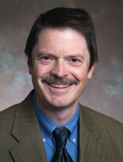 Paul Spearman
Paul Spearman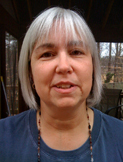 Cheryl Burgess
Cheryl Burgess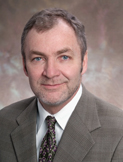 Walter Curran
Walter Curran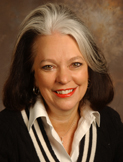 Kathryn Graves
Kathryn Graves

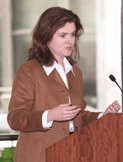 Joyce Doyle
Joyce Doyle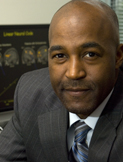 DuBois Bowman
DuBois Bowman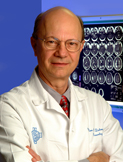 Mahlon DeLong
Mahlon DeLong